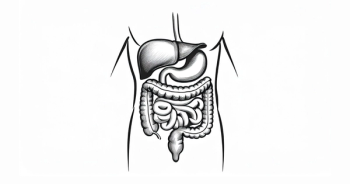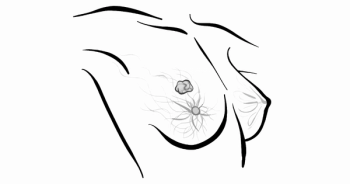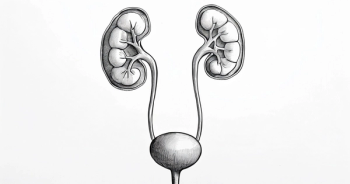
Sarcopenic Obesity Associated with Worse OS Outcomes in Endometrial Cancer
While some studies have found that obesity provides a survival advantage in certain cancers, sarcopenia obesity was found to be associated with worse survival outcomes in patients with endometrial cancer.
Sarcopenic obesity is associated with reduced overall survival (OS) in patients with endometrioid endometrial cancer (EEC), according to a retrospective study published in the International Journal of Gynecology and Obstetrics.
While obesity is associated with an increased risk of death among the general population, how obesity impacts survival in cancer patients remains unclear. Some studies have even found a survival benefit for those who are overweight or obese. A high body mass index (BMI) and obesity is associated with low-grade EEC and relatively good OS.
The retrospective study included 176 patients diagnosed with primary grade 3 EEC or non-endometroid carcinoma between February 2006 and August 2017 at the Royal Cornwall Hospital Trust in Truro, Cornwall, United Kingdom. Patients with grade 1 or 2 EEC were excluded.
The median age of the study population was 70 years and the median BMI was 29.4 kg.m2. Ninety-eight percent of patients were Caucasian, 35% were sarcopenic, and 10% met the criteria for sarcopenic obesity. The median overall survival was 42. BMI groups observed included <25 (22%), 25-30 (30%), and >30 (44%). Seventy-nine percent were not smokers, and 52% had 2 or more comorbidities. Diabetes mellitus was seen in 13% of patients and hypertension was seen in 51%. Over half, 52%, had an ECOG score of 0 and 51% had a FIGO stage of I.
Histologies observed included endometroid (38%), serous (22%), carcinosarcoma (20%), clear cell (9%), mixed tumors (5%), and other (6%). Seventy-two percent of patients had a lymphadenectomy and 7% had intraoperative complications. Postoperative complications were seen in 24% of patients and adjuvant therapy in 66% of patients. Recurrence was seen in 23% of patients and death in 54% of patients. The cause of death was endometrial cancer in 73% of patients. The median survival was 42 months.
In the sarcopenic population, the median age was 72 and the median BMI was 25.7. BMI groups included < 25 (40), 25-30 (30%), and >30 (30%). Seventy-nine percent of patients included were not smokers and 50% had 2 or more comorbidities. Diabetes mellitus was seen in 8% of patients and hypertension in 46% of patients. Forty-nine percent had an ECOG score of 0. Histologies included endometroid (36%), serous (24%), carcinosarcoma (21%), clear cell (12%), mixed tumors (2%), and other (2%). Forty-eight percent had a FIGO score of I. Lymphadenectomy was performed in 26% of patients, 2% of patients had intraoperative complications, 16% had post-operative complications, and 63% received adjuvant chemotherapy. Recurrence was seen in 21% of patients and death in 51% of patients. The cause of death was endometrial cancer in 81% of patients. The median survival was 51 months.
The median age of patients in the sarcopenic obesity cohort was 72, with a median BMI of 32.6 kg/m2. All of the patients in the cohort were non-smokers, and 71% had 2 or more comorbidities. Diabetes mellitus was seen in 18% of patients and hypertension in 71% of patients. Forty-one percent had an ECOG score of 0 and 59% had a FIGO stage of I. Histologies included endometrioid (23%), serous (23%), carcinosarcoma (23%), clear cell (12%), mixed tumors (7%), and other (12%). Lymphadenectomy was performed in 67% of patients and intraoperative complications occurred in 7% of patients. Postoperative complications were seen in 80% of patients. Seventy-one percent received adjuvant therapy. Recurrence occurred in 29% of patients and death in 53% of patients. The cause of death was endometrial cancer in 89% of patients. The median survival was 40 months.
An initial analysis found sarcopenia was not associated with OS (P =.951) nor disease-specific survival (DSS) (P =.545) in EC patients. The median OS was 69 months (95% CI, 44-95). For sarcopenic patients and 55 months (95% CI, 18-93) for non-sarcopenic patients.
However, the multivariate analysis found that sarcopenic obesity (P =.048), FIGO stage (P =.0005), and age (P=.015) were associated with OS in high-grade EEC. An OS association was also seen in NEEC patients regarding FIGO stage (P <.001), BMI (P =.007) and age (P =.024). However, For DSS, only FIGO stage (P <.001) and BMI (P =.042) were found to be significantly associated.
“This study underlines the importance of adiposity and muscle loss and its impact on survival in EC patients. Several treatment programs have been described to improve adiposity and sarcopenia including lifestyle changes with calorie restrictions and physical activities. High intensity resistance training can slow the loss of muscle and can be valuable for post-treatment rehabilitation,” wrote study authors.









































